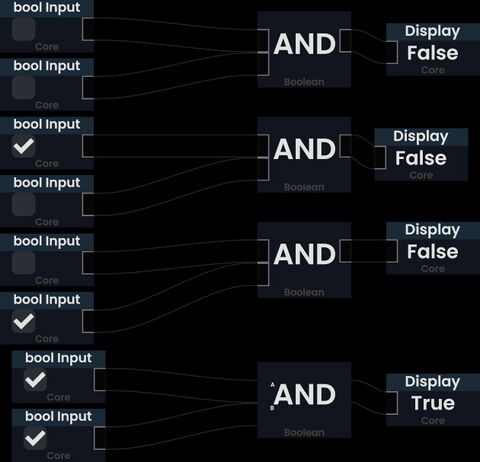Added a See Also section. Added a Further Reading section. Fixed node visual. Updated descriptions. |
Added an information note. |
||
| (One intermediate revision by the same user not shown) | |||
| Line 13: | Line 13: | ||
|}} | |}} | ||
The ''' | The '''AND''' node takes in two value inputs (either a [[Type:bool|bool]] or a [[Value Type|number]] value), and functions as both a [https://en.wikipedia.org/wiki/Logical_conjunction logical AND] or [https://en.wikipedia.org/wiki/Bitwise_and#AND bitwise AND] depending on the type used. | ||
If both inputs are true, then the result will be true. | If both inputs are true, then the result will be true. | ||
{{Note|This node's inputs default to true.|information}} | |||
== Inputs == | == Inputs == | ||
Latest revision as of 17:09, 29 June 2024
AND
Boolean
The AND node takes in two value inputs (either a bool or a number value), and functions as both a logical AND or bitwise AND depending on the type used.
If both inputs are true, then the result will be true.
Inputs
A (Pseudo-generic)
The first input value.
B (Pseudo-generic)
The second input value.
Outputs
* (Pseudo-generic)
Returns the result of a logical AND of A and B if the node is a bool type, bitwise AND otherwise.
Examples
-
Example outputs of an AND node.
Further Reading
Videos
See Also
- Wikipedia's definition of logical conjunction, bitwise and, & and gate.
- Microsoft's documentation on the and operator.
